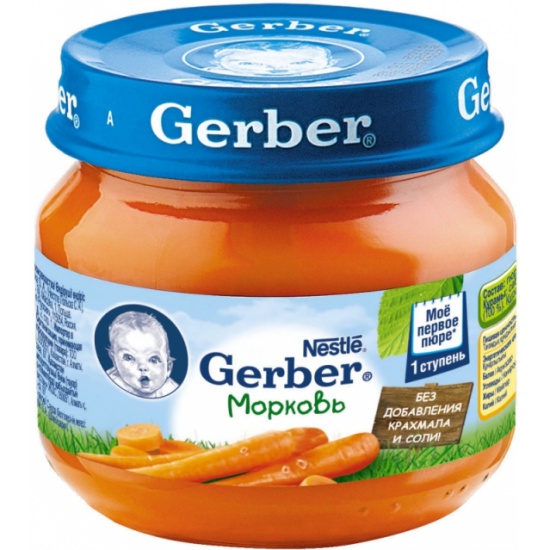Baby feeding and diaper chart
Newborn and Baby Feeding Chart in the 1st Year
Whether you’re a first-time parent or a seasoned caregiver, figuring out why your baby is crying can feel like a guessing game. Fortunately, paying attention to your baby’s daily feeding schedule can help reduce some of the guesswork.
By following a feeding schedule, you might be able to avoid some of the fussiness associated with hunger, and you’ll be able to more easily tell whether he’s more likely to be wet or tired instead.
Whether your little one’s a newborn, a 6-month old, or even a 1-year-old, read on to find out how to come up with a feeding schedule and adjust it to your baby’s needs as he grows and develops.
Baby Feeding Chart at a Glance
As you watch for those delightful baby milestones — from first smiles and giggles to sitting and crawling — it can be hard to keep track of everything related to your baby’s feeding schedule. Fortunately, you don’t have to. We've assembled all the necessary details in the chart below, including feeding frequency and portion information.
Feeding Schedule for Breastfed Newborns
From the moment your baby is born, she begins to grow at a surprisingly quick pace. To fuel her development and keep her well fed, be prepared to nurse about every two to three hours.
By the time she’s a week old, your little one may begin to nap for longer periods, giving you more time between feedings. If she’s sleeping, you can maintain your baby’s feeding schedule by waking her up gently when it’s time to feed.
Tips to keep in in mind if you’re breastfeeding:
The length of time between feedings is measured from when your baby begins nursing, not when she stops.
Ensure your little one latches on properly. This can be difficult when you’re starting out, especially for first-time moms, but over time your baby may begin to latch comfortably.
 Speaking to a lactation consultant could be helpful.
Speaking to a lactation consultant could be helpful.As your baby grows she may nurse at a faster rate.
Alternate between breasts during each feeding.
Look for signs that your baby is full. She may turn away from the breast, nurse at a slower rate, or lose interest. Once she seems full, end the feeding
Your baby’s healthcare provider may recommend adding vitamin D oral supplements to your baby’s diet. Follow the provider's instructions to ensure your baby gets the proper dosage.
Nursing your baby on demand or every couple of hours around the clock can seem like a lot—and it is! At the newborn stage, your baby can’t take in much milk in a single sitting, so frequent feeding is needed to make sure she's getting enough. Later on, as your baby's daily routine (including her sleep and awake time) becomes more predictable, you'll have an easier time following a regular feeding schedule.
Feeding Schedule for Formula-Fed Newborns
Formula-fed newborns will need about two to three ounces (60 – 90 milliliters) of formula per feeding to start with. Newborns, fed from bottles are able to take in more during a feeding than a breastfed infants. This allows you to space out feedings by about three to four hours.
Newborns, fed from bottles are able to take in more during a feeding than a breastfed infants. This allows you to space out feedings by about three to four hours.
As your baby reaches her 1-month milestone, she will need at least four ounces per feeding to get the nourishment she requires. Your newborn’s feeding schedule will gradually become more predictable over time, and you’ll need to adjust the amount of formula as she grows.
3-Month-Old Feeding Schedule
Now that you and your baby have begun to develop a routine, it can be difficult to make slight alternations. However, as your baby grows and her feeding needs change, you’ll need to adjust your baby’s feeding schedule accordingly.
For Your Breastfed Baby
At 3 months, your baby is becoming more active, will begin to breastfeed less often, and may sleep for longer periods of time at night.
You may have to nurse just six to eight times per day at this stage (or about every three to four hours).
If your baby’s healthcare provider sees that he’s gaining weight and growing at a regular pace, then he’s probably getting the right amount of nutrition.
The number of wet and soiled diapers is also a great indicator as to whether or not he is eating well. Your baby should have about four to six wet diapers a day.
See your baby’s healthcare provider if you’re concerned that your little one may not be getting enough to eat.
For Your Formula-Fed Baby
As your little one continues to grow, you’ll notice that he wants to eat more during each feeding and begins to sleep for longer intervals at night.
Slight adjustments to your 3-month old’s feeding schedule may include:
Increasing the amount of formula to about 5 ounces per feeding
Giving your baby formula about six to eight times per day
Switching the newborn nipple size or style on your baby’s bottles to make it easier for him to drink from the bottle.
6-Month-Old Feeding Schedule
At this stage, your baby’s healthcare provider may recommend you expand your baby’s diet to include solid foods. With these menu additions on the horizon, having a 6-month-old feeding schedule will come in handy!
With these menu additions on the horizon, having a 6-month-old feeding schedule will come in handy!
When a baby ready to try solid foods, a single grain baby cereal mixed with breast milk or formula has traditionally been the first solid food to be introduced, followed by pureed vegetables and fruits. However, there's no medical evidence that indicates introducing foods in any special order offers any benefits.
Keep in mind that solids are only a supplement at this stage, and that breast milk or formula is still your baby’s most important source of nutrition. Continue to include about 32 ounces of breast milk or formula in your 6-month-old’s feeding schedule of three to five feedings per day to ensure your baby gets the necessary vitamins and minerals.
You may be able to start weaning your baby off of night feedings; however, every baby is unique. Speak to your baby’s healthcare provider to see if it’s time to cut down on nighttime feedings and to learn what you can do to encourage the process.
7 to 9-Month-Old Feeding Schedule
Months seven through nine can be a good time to add a greater variety and quantity of solid foods to your baby’s diet. He may need fewer daytime feedings, now — about four to five.
Purees of meats, veggies, and fruits are recommended at this stage. Introduce your baby to these new flavors as single ingredient purees then gradually add combinations to his meals.
Your baby may slowly begin to wean off breast milk or formula as his growing body demands solid foods for nutrition.
There is no correct time to wean off breast milk or formula. Speak to your baby’s healthcare provider to learn more about the cues and signs that can let you know when your baby is ready for more solid foods.
10 to 12-Month-Old Feeding Schedule
Exploring new textures may now be a big part of your little one’s meals. As he grows, he may begin to self-feed with finger foods such as cut-up bananas, dry cereal, and pasta and even demand certain flavors that he enjoys more.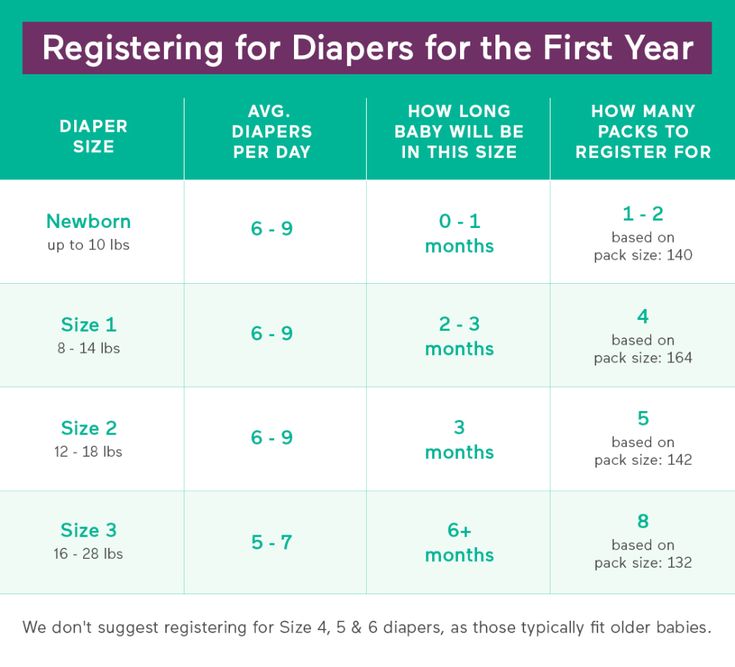
As you continue to replace breast milk or formula with solids, your baby’s healthcare provider can help determine how to balance out your baby’s meals.
Blends of different foods can be introduced during mealtime and added to your baby’s feeding schedule. Your baby may eat about three to four times per day. Be sure to avoid offering foods that pose choking hazards such as grapes, peanuts, and popcorn.
Finger feeding can be fun for your little one. Always be sure that his food is cut up into pieces that are small enough for him to be able to pick up and chew without being at risk of choking. After some practice, he’ll be on his way toward wholesome, independent eating habits.
1-Year-Old Feeding Schedule
Now that you’re celebrating your baby’s first birthday, it’s also time to celebrate his feeding accomplishments. Your baby’s feeding schedule can now include almost all the healthy and nutritious foods you eat, with a few minor exceptions such as raw honey and choking hazards like nuts.
Your baby may be eating less frequently now, as he is able to take in more food in one sitting. Give your 1-year-old approximately three meals and about two or three snacks a day.
This is the time to add cow’s milk to your baby’s diet. However, too much milk is not always good, and should be kept to about 16 to 24 ounces per day if your baby is able to tolerate lactose. Check with your baby's healthcare provider if you have any questions about how and when to introduce cow's milk.
You can continue to nurse your baby if you wish. There is no correct time to wean him off of breast milk; rather, it is recommended that to continue breastfeeding for as long as it is right for you and your little one. Consult with your baby’s healthcare provider if you have questions about the weaning process.
As your baby grows and develops, his feeding needs will change. Having a baby feeding schedule at the ready can help you track your baby’s mealtimes and anticipate when he’ll start to be hungry.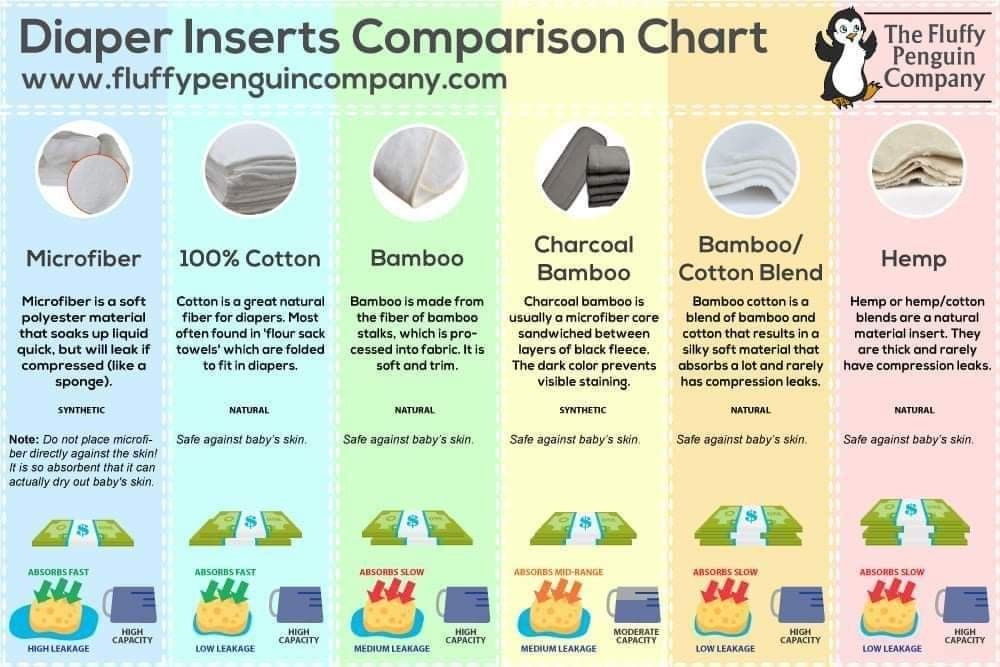
This is just one of the ways you can help keep your little one happy and developing well. Having a feeding schedule in place also gives you some extra freedom to spend more time enjoying his many milestones.
Of course, if at any time you have questions or concerns, reach out to your baby’s healthcare provider for personalized guidance and advice.
Best Baby Feeding and Diaper Tracker Tools & Apps of 2022
Keeping track of all of the details about your baby’s sleep, feedings, and diapers can be overwhelming… especially when you can’t remember the last time you slept more than 3 hours in a row. That’s why one of my top pieces of advice for new moms is to find a Baby Feeding and Diaper Tracker app.
When I started my new life with a newborn (a life in which I saw 2 am with more regularity than ever before) I kept a notebook by my bedside. Inside, my husband and I religiously wrote down what time our baby ate, produced stool, and slept. If only I would have known then that there are tons of great tools, including Baby Feeding and Diaper Tracker apps, that make it a little easier.
We keep this post updated with the latest and greatest diaper tracking and baby feeding app options. Because there are two things in life that change in the blink of an eye; technology and babies!
| Best of… | Best Tracker Tools & Apps |
|---|---|
| Overall Best App for New Moms | Talli Baby |
| Best for Tracking Weight & Feedings | Hatch Baby Smart Changing Pad |
| Best for Diaper Tracking | Ovia Parenting & Baby Tracker |
| Top App for Breastfeeding Moms | Talli Baby |
| Must-Have for Apple Watch Lovers | Glow Baby |
The Best Baby Feeding Apps and Diaper Trackers
Talli Baby
Talli Baby is definitely one of the top baby tracking apps out there. I am eternally grateful for how easy it was to track everything with my last baby through this app and I couldn’t recommend it more highly!
While you can use the app by itself, what really sets Talli Baby apart from all the rest is the Talli Baby Tracker device. Rather than having to fiddle with your phone, you simply press a button on the device and it tracks it for you. You can log feedings, diapers, sleep, and more. It can even help remind you which side you breastfed on last! I set my device up in our nursery which made tracking in the middle of the night a breeze.
Rather than having to fiddle with your phone, you simply press a button on the device and it tracks it for you. You can log feedings, diapers, sleep, and more. It can even help remind you which side you breastfed on last! I set my device up in our nursery which made tracking in the middle of the night a breeze.
The app and device are both super easy to use. I also really love that the app helped me feel prepared for doctor’s visits (which can be intimidating!) with all the important information about my baby’s schedule right at my fingertips. Through the app, you can also share your baby’s data with your doctor or nanny for convenience.
Watch this video to see how Talli works!
Use Promo Code: Rookiemoms and get $10 off your Talli purchase.
Check it out here!
Hatch Baby Activity Tracker & Hatch Baby Smart Changing Pad
The Hatch Baby Activity Tracker is another great app that is enhanced with the use of additional devices. This app can be used to log diapers, sleep, and feedings.
When the app is paired with the Hatch Baby Smart Changing Pad, you can lay your baby down to change them and easily track their weight at the same time with the simple push of a button. The data from the changing pad will be stored and displayed in the free Hatch Baby Activity Tracker app. It even allows parents to compare their baby’s growth to data from the World Health Organization, instantly!
Plus, Hatch Baby will remind you to take a photo a day in the app so that it can generate a video at the end of the year. The video will show your baby growing a year’s worth in a minute. (This will surely go viral among your Facebook friends! Or at least your family.)
Check it out here!
Glow Baby: Newborn Tracker Log
The Glow Baby App is the smartest all-in-one baby tracker! You can track your baby’s growth, monitor routines, and engage in the supportive community. You can also track with caregivers and automatically sync on all devices so everyone that watches or engages with your baby knows exactly your baby’s habits and schedule. Track breastfeeding to diaper changes as well as naps, pumping sessions, and more!
You can also track with caregivers and automatically sync on all devices so everyone that watches or engages with your baby knows exactly your baby’s habits and schedule. Track breastfeeding to diaper changes as well as naps, pumping sessions, and more!
If you love your Apple Watch, you have to check out this app!
Ovia Parenting & Baby Tracker
The key features of this app will be very helpful for your parenting journey. Not only can you track your baby’s diaper changes, sleep, growth, and milestones with this app but it also includes an infant feeding log. It provides you with a customized app experience. Plus, you can add family, friends, and followers to share photos and videos with! Check it out here.
Pump Log
If you are a pumping mama, this app is a must-have! This pumping tracker will help you keep track of when you pumped, how long you pumped, and how much you pumped. It also has an awesome feature that will help you keep track of your freezer stash and alert you when you have stored enough to stop pumping.
Pump Log allows you to log the first 50 pump sessions for free and is $14.99 after that. Check it out here!
Lansinoh’s Smart Pump 2.0 Double Electric Breast Pump + App
This new pump connects to your smartphone with Bluetooth and automatically logs the output of your pumping sessions into the Lanisoh Baby App 2.0. Here are some important details about the pump itself: it’s quiet, it has a light-up touch button LCD screen making it easy to use, it has 8 different suction levels, and 3 pumping styles.
When you use this pump you will have access to their app. Since they know pumping is not the only piece of the puzzle they’ve included other tracking functions in their app, like feeding and diapers. It’s all in one place!
Check out Lansinoh’s Smart Pump 2.0 Double Electric Breast Pump here. If you aren’t set on having a built-in baby feeding and diaper tracker, this pump is also available without the Bluetooth connection for a more budget-friendly price here.
Nara Baby App
The Nara Baby App helps with your baby’s overall routine, which probably mostly includes eating, sleeping, and pooping. This app will work as both a feeding and diaper tracker. They made this app with the idea of making it as easy as possible to track so that you can spend time on the more important stuff, like quality time! What I love most about Nara is that you can share it across multiple devices making it easier for everyone to be on the same page with your baby’s schedule.
Download the app here!
A Couple of Bonus Apps That Make Parenting Easier
The Best 2-for-1 Breastfeeding and Baby Tracker App: Feed BabyAvailable for iPhone and Android, this reader-recommended baby feeding and diaper tracker app allows parents to enter logs for breastfeeding, bottle feeds, sleep, solid foods, diapers, and medications.
For Tracking Doctor’s Appointments & Milestones: Sprout Baby
Not only does this app track the details of your baby’s daily life, but as you add developmental milestones and photos, it generates an adorable little report. The report is in the style of a newspaper (remember those?), and the front page that combines age-appropriate tips with actual facts about your child.
The report is in the style of a newspaper (remember those?), and the front page that combines age-appropriate tips with actual facts about your child.
Our Favorite Sleep Tracking Tool: Huckleberry
Want professional sleep advice for your little one right at your fingertips? Huckleberry is an affordable way to get the help you need. SweetSpot, their free sleep help tool, is the best place to start. This tool gives optimal sleep time predictions making naps and bedtimes easier by making sure your baby isn’t under tired or overtired. All you do is log a couple of sleep sessions and you will start getting these alerts.
They also offer affordable personalized guidance by sleep experts! You take a questionnaire, track your little one’s sleep for a couple of days, then both the algorithm and the experts took a look at your data. From there, a custom sleep plan is created for you to follow.
Huckleberry Premium is truly a great chance to take action without breaking the bank because you receive continued guidance and milestone assessments. I mean, you get expert advice personalized to your family’s needs for less than $20! Trust me, your sleep is worth this small investment.
I mean, you get expert advice personalized to your family’s needs for less than $20! Trust me, your sleep is worth this small investment.
Sharing Milestones with Ultimate Privacy: Tinybeans
This app provides a way for you to share and store photos and memories with the people you choose. It’s a great option for people who don’t love posting frequently on social media but have family far away with who they want to share all the little things.
The Best App for Connecting All Your People: Sproutly
From pregnancy to parenthood, this app will help you keep everyone in the know about updates with your baby. Rather than spreading your information all across social media, you can just keep the people you want in the loop, in a private and secure platform that is shielded from ads or ad-targeting. It allows you to keep your people updated on the due date, your gift registry information, the latest pictures and important milestones once your baby arrives.
We especially love this app for people that have extended friends & family across the world. Rather than a personal page, you have a family page allowing you to give updates about each family member and see other family’s updates! Check it out here.
#1 App for Newborns: Baby Tracker Newborn Log
This is another one that does it all, from logging nursing sessions to sleep and diaper changes. Plus, you get to track it all on an app with an elegant interface that’s easy to use. See it in more detail here.
The App for Making Mom Friends: Peanut
If you are looking for ways to connect with other women who are on the same journey, whether it be fertility-related, pregnancy, or parenthood, then you have to check out Peanut! It is a great way to meet women nearby. We all could use a mom friend or two after all!
How I Found Out Tracking is an Important Part of Parenting
Sleep deprivation can make keeping track of time challenging for new parents. When our baby was old enough to start sleeping in regular stretches, we realized we still were unsure of what these patterns were (Because what time was that? Were we up for an hour or was that 10 minutes? It’s all the same).
When our baby was old enough to start sleeping in regular stretches, we realized we still were unsure of what these patterns were (Because what time was that? Were we up for an hour or was that 10 minutes? It’s all the same).
We then realized we needed to find a way to track his sleep and wake times. We went back to our trusty notebook, believing that if we wrote down what was happening, we could make some sense out of it.
For me, the baby’s naps always felt to be just about 20 minutes long. When we started tracking, I realized he was actually napping for much longer. It was helpful to have logged the start time for a reality check. Woman, you’ve been scrolling on Instagram for 90 minutes. Whoops.
Whether you like a notebook, a spreadsheet template (we have a printable baby tracker you can use), or an app on your phone, it’s so important to find a system that works for you! We hope the list above has helped you do just that.
Is there a baby app you couldn’t live without? We would love to hear about it in the comments below!
Frequently Asked Questions
How do you keep track of newborn feedings?
You can track with a pen & paper, in your phone notes, or with an app designed to make tracking easy.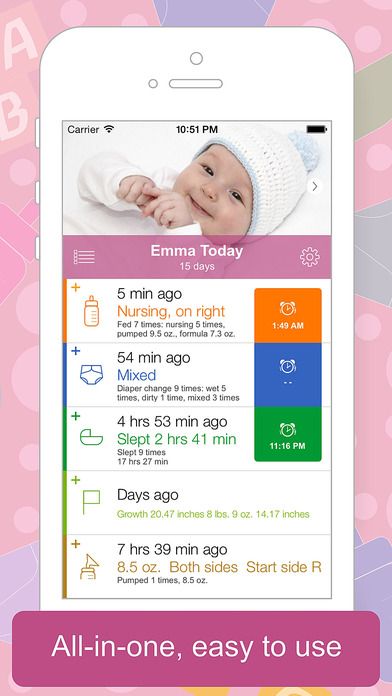 You will want to note which breast you fed on, the time of the feeding session, and how many ounces your baby ate.
You will want to note which breast you fed on, the time of the feeding session, and how many ounces your baby ate.
Can both parents use baby tracker?
Many baby tracker apps allow both parents or multiple caregivers to use them. Our top 2 are Talli Baby and Glow Baby.
What is the best baby tracking app?
Ovia Pregnancy Tracker
Pregnancy Tracker and Baby App
Baby Tracker Newborn Log
Hatch Baby (along with the Hatch Baby Changing Pad)
Huckleberry
Pin for Later- Best Baby Feeding and Diaper Tracker Tools and Apps!
Complementary feeding scheme under the National Program | menu for the first 90 days
Complementary feeding scheme in accordance with the NATIONAL PROGRAM OF OPTIMIZATION OF FEEDING OF CHILDREN IN THE FIRST YEAR OF LIFE IN THE RUSSIAN FEDERATION (hereinafter referred to as the National Program).
Circuit description: show hidden text
About the Closed Weaning Club with Mama Borer : Below is a table of ideal complementary foods, but you should know that information about the set of products and volumes is not enough for a competent introduction of complementary foods. Any mother at the stage of complementary feeding is waiting for a lot of tests. There is a CLOSED club on instagram where I post selective information about modern complementary foods. Details at the link.
Any mother at the stage of complementary feeding is waiting for a lot of tests. There is a CLOSED club on instagram where I post selective information about modern complementary foods. Details at the link.
Complementary feeding scheme under the National Program | First month of complementary foods
First week of complementary foods
We introduce zucchini.
- Breakfast: increasing the portion of zucchini puree. We finish breakfast with the usual food (breastfeeding or formula) until full. Oil is added when portion sizes become significant. If volumes cannot be increased, do not add oil .
- Other meals: give the baby the usual food - breastfeeding or formula.
| Day | New product in diet | Grams (teaspoons) |
| 1 | squash puree | 8 (1) |
| 2 | squash puree | 20 (3) |
| 3 | squash puree | 40 (6) |
| 4 | squash puree + 1/3 tsp vegetable oil | 60 (9) |
| 5 | squash puree + 0. 5 tsp vegetable oil 5 tsp vegetable oil | 90 (13) |
| 6 | squash puree + 0.5 tsp vegetable oil | 120 (17) |
| 7 | squash puree + 0.5 tsp vegetable oil | 150 (21) |
Second week of complementary foods
Introducing broccoli. The zucchini has already been introduced.
- Breakfast: we prepare two types of puree. We offer broccoli puree first, zucchini second. Oil is added when portion sizes become significant. If volumes cannot be increased, do not add oil .
- Other meals: give the baby the usual food breastfeeding or formula.
| Day | New product | Grams (teaspoons) | Previously introduced product | Grams (teaspoons) |
| 8 | broccoli puree | 8 (1) | zucchini puree +0. 5 tsp vegetable oil 5 tsp vegetable oil | 142 (20) |
| 9 | broccoli puree | 20 (3) | zucchini puree +0.5 tsp vegetable oil | 130 (17) |
| 10 | broccoli puree | 40 (6) | zucchini puree +0.5 tsp vegetable oil | 110 (15) |
| 11 | broccoli puree | 60 (9) | zucchini puree + 0.5 tsp vegetable oil | 90 (12) |
| 12 | Broccoli puree + 1/3 tsp vegetable oil | 90 (13) | zucchini puree + 1/3 tsp vegetable oil | 60 (8) |
| 13 | broccoli puree + 0.5 tsp vegetable oil | 120 (17) | zucchini puree | 30 (4) |
| 14 | broccoli puree + 0.5 tsp vegetable oil | 150 (21) |
Third week of complementary foods
Introducing cauliflower. Zucchini and broccoli have already been introduced.
Zucchini and broccoli have already been introduced.
- Breakfast: we prepare two types of puree. We offer cauliflower puree first, broccoli / zucchini second. Oil is added when portion sizes become significant. If volumes cannot be increased, do not add oil .
- Other meals: give the baby the usual food - breastfeeding or formula.
| Day | New product | Grams (teaspoons) | Previously introduced product | Grams (teaspoons) |
| 15 | cauliflower puree | 8 (1) | broccoli puree +0.5 tsp vegetable oil | 142 (20) |
| 16 | cauliflower puree | 20 (3) | zucchini puree +0.5 tsp vegetable oil | 130 (17) |
| 17 | cauliflower puree | 40 (6) | broccoli puree + 0. 5 tsp vegetable oil 5 tsp vegetable oil | 110 (15) |
| 18 | cauliflower puree | 60 (9) | zucchini puree +0.5 tsp vegetable oil | 90 (12) |
| 19 | Cauliflower puree + 1/3 tsp vegetable oil | 90 (13) | broccoli puree + | 60 (8) |
| 20 | cauliflower puree + 0.5 tsp vegetable oil | 120 (17) | zucchini puree | 30 (4) |
| 21 | cauliflower puree + 0.5 tsp vegetable oil | 150 (21) |
Fourth week of complementary foods
We introduce buckwheat. We add a second meal of complementary foods - lunch. Zucchini, broccoli, cauliflower have already been introduced.
- Breakfast: Cooking buckwheat.
 We finish breakfast with the usual food (breastfeeding or formula) until full. If volumes cannot be increased, do not add oil by the end of the week .
We finish breakfast with the usual food (breastfeeding or formula) until full. If volumes cannot be increased, do not add oil by the end of the week . - Lunch: for lunch we serve a portion of mashed potatoes (150 gr) from familiar vegetables.
- Other meals: give the baby the usual food breastfeeding or formula.
| Day | New product in diet | Grams (teaspoons) |
| 22 | buckwheat | 8 (1) |
| 23 | buckwheat | 20 (3) |
| 24 | buckwheat | 40 (6) |
| 25 | buckwheat + 1/3 tsp butter | 60 (9) |
| 26 | buckwheat + 0.5 tsp butter | 90 (13) |
| 27 | buckwheat + 0.5 tsp butter | 120 (17) |
| 28 | buckwheat + 0. 5 tsp butter 5 tsp butter | 150 (21) |
Complementary feeding scheme under the National Program | Second month of complementary foods
Fifth week of complementary foods
We introduce rice porridge. Zucchini, broccoli, cauliflower, buckwheat have already been introduced.
- Breakfast: we cook 2 types of porridge (rice and buckwheat). First we offer rice, the second - buckwheat.
- Lunch: We eat the previously introduced vegetables for lunch in the amount required by the baby (average portion 150 gr).
- Other meals: give the baby the usual food breastfeeding or formula.
| Day | New product | Grams (teaspoons) | Previously introduced product | Grams (teaspoons) |
| 29 | rice | 8 (1) | buckwheat + 1 tsp butter | 142 (20) |
| 30 | rice | 20 (3) | buckwheat + 1 tsp butter | 130 (17) |
| 31 | rice | 40 (6) | buckwheat + 1 tsp butter | 110 (15) |
| 32 | rice + 0. 3 tsp butter 3 tsp butter | 60 (9) | buckwheat + 0.5 tsp butter | 90 (12) |
| 33 | rice + 0.5 tsp butter | 90 (13) | buckwheat + 0.3 tsp butter | 60 (8) |
| 34 | rice + 1 tsp butter | 120 (17) | buckwheat | 30 (4) |
| 35 | rice + 1 tsp butter | 150 (21) |
Sixth week of complementary foods
We drive a rabbit. On the second month of successful introduction of complementary foods, the gastrointestinal tract is ready for the introduction of meat. Zucchini, broccoli, cauliflower, buckwheat, rice have already been introduced.
- Breakfast: Cooking buckwheat/rice (portion 150 gr), adding meat to the porridge!
- Lunch: for lunch we serve a portion of mashed potatoes (150 gr) from familiar vegetables.

- Other meals: give the baby the usual food breastfeeding or formula.
| Day | New product | Grams (teaspoons) | Previously introduced product | Grams (teaspoons) |
| 36 | rabbit meat/commercial rabbit puree | 3g/5g | buckwheat + 1 tsp butter | 150 (21) |
| 37 | rabbit meat/commercial rabbit puree | 6g/10g | rice + 1 tsp butter | 150 (21) |
| 38 | rabbit meat/commercial rabbit puree | 10gr/20gr | buckwheat + 1 tsp butter | 150 (21) |
| 39 | rabbit meat/commercial rabbit puree | 15g/30g | rice + 1 tsp butter | 150 (21) |
| 40 | rabbit meat/commercial rabbit puree | 15g/30g | buckwheat + 1 tsp butter | 150 (21) |
| 41 | rabbit meat/commercial rabbit puree | 15g/30g | rice + 1 tsp butter | 150 (21) |
| 42 | rabbit meat/commercial rabbit puree | 15g/30g | buckwheat + 1 tsp butter | 150 (21) |
Seventh week of complementary foods
Introducing corn porridge.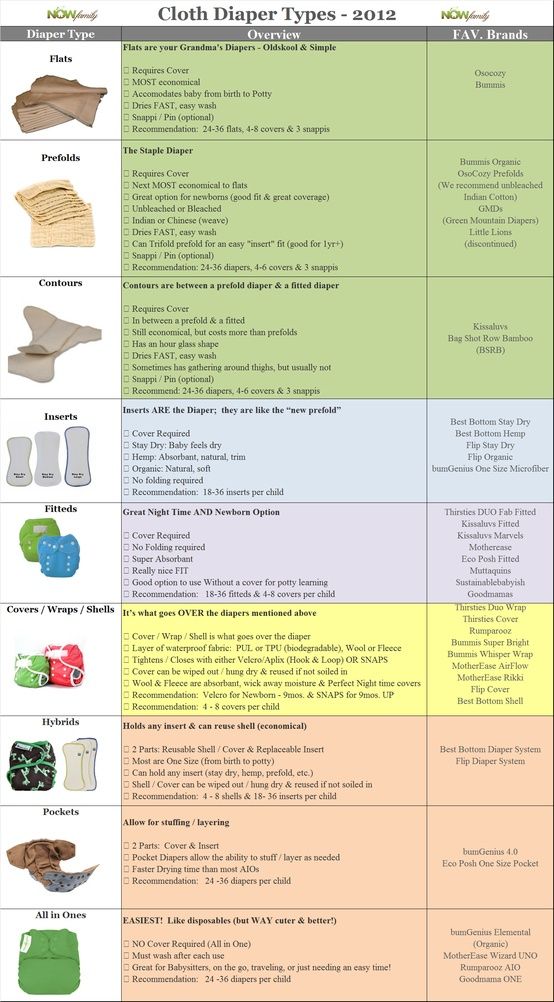 Six products have already been introduced: zucchini, broccoli, cauliflower, buckwheat, rice, rabbit meat.
Six products have already been introduced: zucchini, broccoli, cauliflower, buckwheat, rice, rabbit meat.
- For breakfast: we add corn porridge to the usual porridges. For breakfast we prepare 2 types of porridge (corn and buckwheat/rice). We offer the first corn, the second - buckwheat or rice. The volumes are listed below.
- For lunch: we eat alternating previously introduced vegetable purees of 150 gr.
- Meat a little bit daily for hemoglobin: In addition to cereals and vegetables, we give the child rabbit meat (15 gr) or industrial rabbit meat puree (30 gr). You can give it in the morning with porridge or for lunch with vegetables, as you prefer.
| Day | New product | Grams (teaspoons) | Previously introduced product | Grams (teaspoons) |
| 43 | corn porridge | 8 (1) | buckwheat + 1 tsp butter | 142 (20) |
| 44 | corn porridge | 20 (3) | rice + 1 tsp butter | 130 (17) |
| 45 | corn porridge | 40 (6) | buckwheat + 1 tsp butter | 110 (15) |
| 46 | corn porridge | 60 (9) | rice + 0. 5 tsp butter 5 tsp butter | 90 (12) |
| 47 | corn porridge + 0.5 tsp butter | 90 (13) | buckwheat + 0.3 tsp butter | 60 (8) |
| 48 | corn porridge + 1 tsp butter | 120 (17) | rice | 30 (4) |
| 49 | corn porridge + 1 tsp butter | 150 (21) |
Eighth week of complementary foods
We introduce pumpkin puree. 7 products have already been introduced: zucchini, broccoli, cauliflower, buckwheat, rice, corn porridge, rabbit meat.
- For breakfast: alternating, we eat previously introduced cereals of 150 gr.
- For lunch: add pumpkin to the usual vegetables. The volumes are listed below.
- Meat a little bit daily for hemoglobin: In addition to cereals and vegetables, we give the child rabbit meat (15 gr) or industrial rabbit meat puree (30 gr).
 You can give it in the morning with porridge or for lunch with vegetables, as you prefer.
You can give it in the morning with porridge or for lunch with vegetables, as you prefer.
| Day | New product | Grams (teaspoons) | Previously introduced product | Grams (teaspoons) |
| 50 | pumpkin puree | 8 (1) | cauliflower puree +1 tsp vegetable oil | 142 (20) |
| 51 | pumpkin puree | 20 (3) | broccoli puree + 1 tsp vegetable oil | 130 (17) |
| 52 | pumpkin puree | 40 (6) | zucchini puree +1 tsp vegetable oil | 110 (15) |
| 53 | pumpkin puree | 60 (9) | cauliflower puree + 1 tsp vegetable oil | 90 (12) |
| 54 | pumpkin puree | 90 (13) | broccoli puree + 1 tsp vegetable oil | 60 (8) |
| 55 | pumpkin puree + 1 tsp.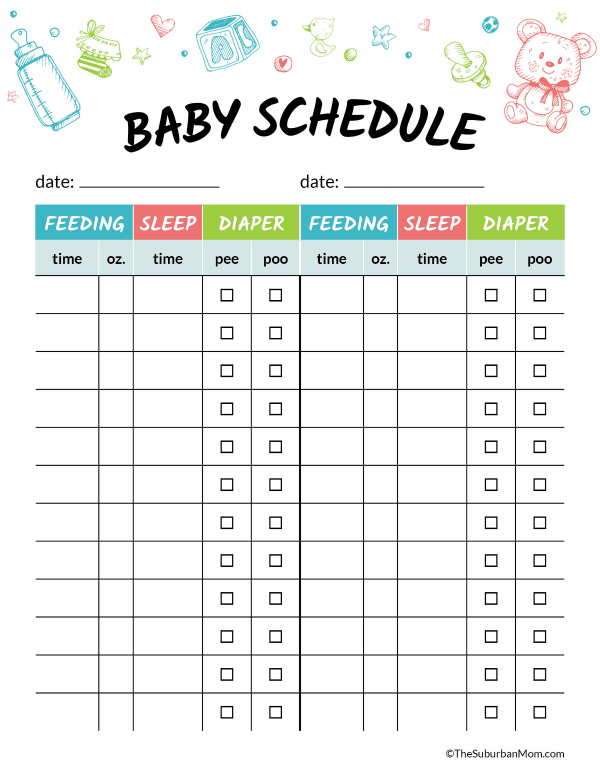 vegetable oil vegetable oil | 120 (17) | zucchini puree | 30 (4) |
| 56 | pumpkin puree + 1 tsp. vegetable oil | 150 (21) |
Complementary feeding scheme under the National Program | Third month of complementary foods
Ninth week of complementary foods
Introduce applesauce. At the input stage, we offer an apple as a snack between breakfast and lunch or for an afternoon snack. 8 products have already been introduced: zucchini, broccoli, cauliflower, pumpkin, buckwheat, rice, corn porridge, rabbit meat.
- For breakfast: alternating, we eat previously introduced cereals of 150 gr.
- For lunch: alternating, we prepare vegetable purees from familiar vegetables, 150 gr each.
- Meat for hemoglobin : In the tenth week of feeding, the child should be 7 months old, which means we increase the daily norm of meat: rabbit meat (30 g) or industrial rabbit meat puree (50 g).
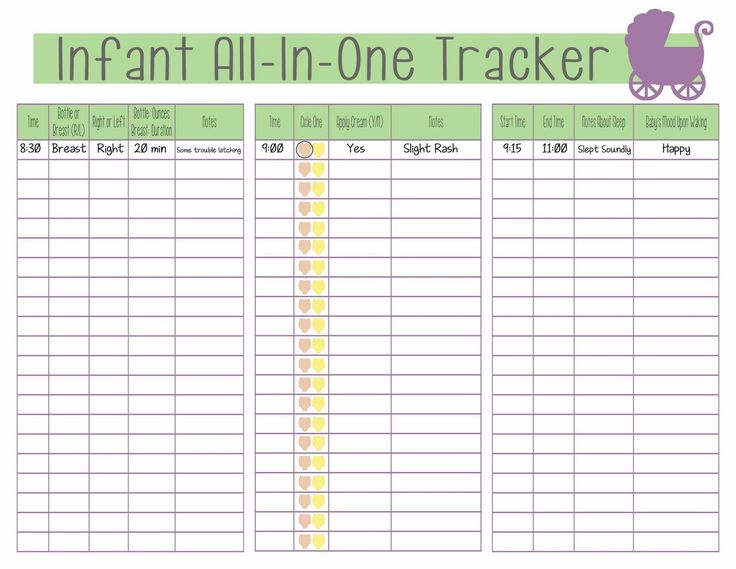 It can be served in the morning with porridge or for lunch with vegetables, as you prefer.
It can be served in the morning with porridge or for lunch with vegetables, as you prefer.
| Day | New product | Grams (teaspoons) |
| 57 | applesauce | 8 (1) |
| 58 | applesauce | 15 (2) |
| 59 | applesauce | 20 (3) |
| 60 | applesauce | 30 (4) |
| 61 | applesauce | 40 (6) |
| 62 | applesauce | 50 (7) |
| 63 | applesauce | 70 (10) |
The tenth week of complementary foods
Introducing oatmeal. 9 products have already been introduced: zucchini, broccoli, cauliflower, pumpkin, buckwheat, corn porridge, rice, rabbit meat.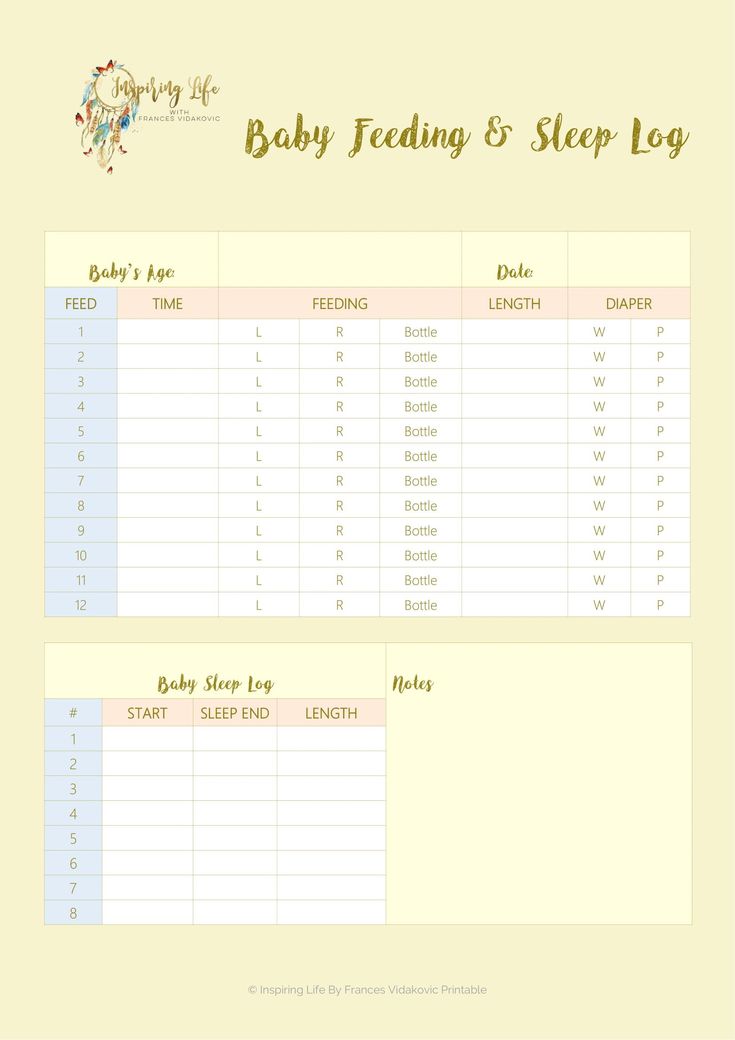 applesauce.
applesauce.
- For breakfast: add oatmeal to the usual porridge. For breakfast, we cook 2 types of porridge (oatmeal and corn / buckwheat / rice). First we offer oatmeal, the second - corn / buckwheat or rice. Oatmeal is taken in the form of flakes, its other name is oatmeal. Do not confuse with cereal oatmeal.
- For lunch: alternating vegetable puree from familiar vegetables portion 150 gr.
- Meat for hemoglobin : Together with vegetables, daily give the child rabbit meat (30 g) or industrial rabbit puree (50 g).
- Snack: apple puree 70 gr.
| Day | New product | Grams (teaspoons) | Previously introduced product | Grams (teaspoons) |
| 64 | oatmeal | 8 (1) | buckwheat + 1 tsp butter | 142 (20) |
| 65 | oatmeal | 20 (3) | rice + 1 tsp butter | 130 (17) |
| 66 | oatmeal | 40 (6) | corn porridge + 1 tsp butter | 110 (15) |
| 67 | oatmeal + 0. 3 tsp butter 3 tsp butter | 60 (9) | buckwheat + 0.5 tsp butter | 90 (12) |
| 68 | oatmeal + 0.5 tsp butter | 90 (13) | rice + 0.3 tsp butter | 60 (8) |
| 69 | oatmeal +1 tsp butter | 120 (17) | corn porridge | 30 (4) |
| 70 | oatmeal +1 tsp butter | 150 (21) |
Eleventh week of complementary foods
Introduce turkey yolk and meat. 10 products have already been introduced: zucchini, broccoli, cauliflower, pumpkin, buckwheat, corn porridge, rice, oatmeal, rabbit meat. applesauce.
- For breakfast: one of the previously introduced cereals (buckwheat, corn porridge, rice, oatmeal) 150 gr + in the first half of the week we increase the amount of yolk (for babies of 7 months, maximum per day - 1/4 yolk, from 8 months up to a year 1/2 yolk)
- For lunch: alternating vegetable puree from familiar vegetables portion 150 gr.
 Together with vegetables, we give the child rabbit meat (30 g) or industrial rabbit meat puree (50 g) daily. In the second half of the week, we gradually replace rabbit meat with turkey.
Together with vegetables, we give the child rabbit meat (30 g) or industrial rabbit meat puree (50 g) daily. In the second half of the week, we gradually replace rabbit meat with turkey. - Snack: apple puree 70 gr.
| Day | New product | Grams (teaspoons) | Previously introduced product | Grams (teaspoons) |
| 71 | yolk 1/8 yolk | |||
| 72 | yolk 1/4 yolk | |||
| 73 | yolk 1/4 yolk | |||
| 74 | turkey meat/commercial turkey puree | 3g/5g | rabbit meat/commercial rabbit puree | 12gr/25gr. |
| 75 | turkey meat/commercial turkey puree | 10g/15g | rabbit meat/commercial rabbit puree | 20gr/35gr. |
| 76 | turkey meat/commercial turkey puree | 15g/30g | rabbit meat/commercial rabbit puree | 15gr/20gr. |
| 77 | turkey meat/commercial turkey puree | 30gr./50gr. | rabbit meat/commercial rabbit puree |
Twelfth week of complementary foods
We introduce pear puree. 12 products have already been introduced: zucchini, broccoli, cauliflower, pumpkin, buckwheat, corn porridge, rice, oatmeal, rabbit and turkey meat, applesauce, egg yolk.
- For breakfast: one of the previously introduced cereals (buckwheat, corn porridge, rice, oatmeal) + yolk (7 months - 1/4, 8 months - 1/2).
- For lunch: alternating vegetable puree from familiar vegetables portion 150 gr. Together with vegetables, we give the child turkey or rabbit meat every day (30 g of meat or 50 g of industrial puree).

- Afternoon snack: during the week we gradually replace the apple with a pear.
| Day | New product | Grams (teaspoons) | Previously introduced product | Grams (teaspoons) |
| 78 | pear puree | 8 (1) | applesauce | 62 (9) |
| 79 | pear puree | 15 (2) | applesauce | 55 (8) |
| 80 | pear puree | 20 (3) | applesauce | 50 (7) |
| 81 | pear puree | 30 (4) | applesauce | 40 (6) |
| 82 | pear puree | 40 (6) | applesauce | 30 (4) |
| 83 | pear puree | 50 (7) | applesauce | 20 (3) |
| 84 | pear puree | 70 (10) |
Weaning week 13
We introduce chicken. Already introduced: zucchini, broccoli, cauliflower, pumpkin, buckwheat, corn porridge, rice, oatmeal, rabbit and turkey meat, apple, pear, egg yolk.
Already introduced: zucchini, broccoli, cauliflower, pumpkin, buckwheat, corn porridge, rice, oatmeal, rabbit and turkey meat, apple, pear, egg yolk.
- For breakfast: one of the previously introduced cereals (buckwheat, corn porridge, rice, oatmeal). We serve the yolk to the porridge. 7 months - 1/4 yolk, 8 months. - 1/2.
- For lunch: preparing vegetable puree from familiar vegetables portion 150 gr. Together with vegetables, we give the child a rabbit or turkey every day. During the week, we gradually introduce the child to chicken meat.
- Snack: daily give 70 g of fruit puree alternating apple and pear.
| Day | New product | Grams (teaspoons) | Previously introduced product | Grams (teaspoons) |
| 85 | chicken meat/ industrial chicken puree | 3g/5g | turkey meat/ industrial turkey puree | 27gr. /45gr. /45gr. |
| 86 | chicken meat/ industrial chicken puree | 10g/15g | rabbit meat/ industrial rabbit puree | 20g/35g |
| 87 | chicken meat/ industrial chicken puree | 20g/30g | turkey meat/ industrial turkey puree | 10g/20g |
| 88 | chicken meat/ industrial chicken puree | 30gr./50gr. | ||
| 89 | chicken meat/ industrial chicken puree | 30gr./50gr. | ||
| 90 | chicken meat/ industrial chicken puree | 30gr./50gr. |
Fourteenth week of complementary foods
We introduce carrots and beets. 14 products have already been introduced: zucchini, broccoli, cauliflower, pumpkin, buckwheat, corn porridge, rice, oatmeal, rabbit meat, turkey and chicken, apple, pear, egg yolk.
- For breakfast: one of the previously introduced cereals (buckwheat, corn porridge, rice, oatmeal). We serve the yolk to the porridge. At 8 months, you can already have half.
- For lunch: in the first part of the week we gradually add carrots to the previously familiar vegetables, in the second part of the week - beets. Carrots and beets are concentrated vegetables, so mix them with zucchini or cabbage puree. Together with vegetables, we give the child a rabbit, turkey or chicken every day. For a child of 7 months: 30 g of meat or 50 g of industrial puree. For a child of 8 months: 35 gr. meat or 70 gr. industrial puree.
- Snack: daily give 70 g of fruit puree alternating apple and pear. For babies 8 months 80 gr puree.
| Day | New product | Grams (teaspoons) | Previously introduced product | Grams (teaspoons) |
| 91 | carrot puree | 8 (1) | zucchini puree +1 tsp vegetable oil | 142 (20) |
| 92 | carrot puree | 20 (3) | broccoli puree +1 tsp vegetable oil | 130 (17) |
| 93 | carrot puree | 40 (6) | cauliflower puree marrow +1 tsp vegetable oil | 110 (15) |
| 94 | carrot puree | 60 (9) | zucchini puree +1 tsp vegetable oil | 90 (12) |
| 95 | beet puree | 8 (1) | broccoli puree +1 tsp vegetable oil | 142 (20) |
| 96 | beet puree | 20 (3) | cauliflower puree marrow +1 tsp vegetable oil | 130 (17) |
| 97 | beet puree | 40 (6) | zucchini puree +1 tsp vegetable oil | 110 (15) |
The form for downloading and printing the complementary feeding scheme is here.
Complementary feeding scheme under the National Program | Complementary feeding problems
- Difficulties with stool : constipation during the introduction of complementary foods can occur even against the background of zucchini. This is due to the restructuring of the gastrointestinal tract, and not the fact that the zucchini is “heavy”. "Jump" to another product is not worth it, as this will further complicate the task for the gastrointestinal tract. You should stop increasing the volume of the new product, slightly reduce the already built-up product and wait for the stool to stabilize. Offer water to drink. When the problems pass, introduce a new product not in 7 days, but in 10-14.
- Serving sizes c may be significantly smaller than the reference. It should also be borne in mind that the diagram shows volumes for an infant with an average energy requirement. Depending on the activity and complexion of the baby, they can vary + -30%.
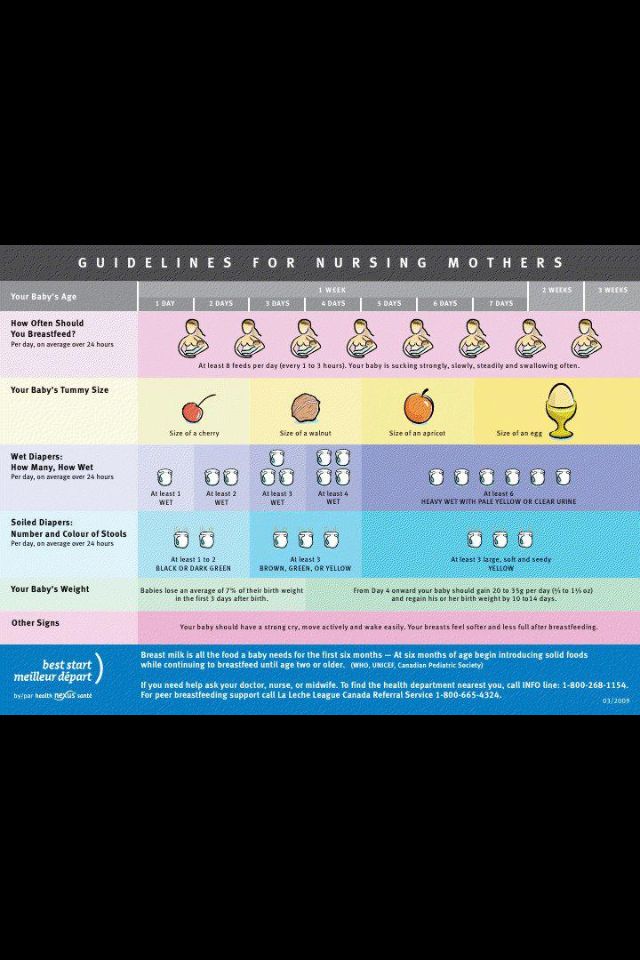 With a greater deviation from the norm, it is recommended to consult a pediatrician.
With a greater deviation from the norm, it is recommended to consult a pediatrician. - Underweight. When underweight, porridge should be introduced first. Secondly, vegetables or meat.
First food. Schemes and approaches
Has the kid already learned to sit, has got his first tooth and is reaching for his mother's sandwich more and more insistently? All this makes mom think more and more about complementary foods. There are several approaches to feeding children, often opposite each other. We suggest that you familiarize yourself with the main schemes for the introduction of complementary foods and by all means make the right choice.
Has the baby already learned to sit, has his first tooth, and is he reaching for his mother's sandwich more insistently? All this makes mom think more and more about complementary foods.
Isn't it too early?
There is no fixed age for the introduction of complementary foods. Each baby is individual and the decision should be made based on the characteristics of the development of your child.
Each baby is individual and the decision should be made based on the characteristics of the development of your child.
At the same time, there are several common parameters that, to one degree or another, indicate the baby’s readiness for complementary foods:
- the baby is 6 months old
- the ejection reflex of the tongue has disappeared
- the baby sits confidently
- the baby’s weight has increased by at least two times
- the baby opens his mouth when a spoon is brought to him and turns away from it if he is not hungry
- interest in adult food is shown
- the first tooth. This factor is rather conditional, because. teeth may not rush up to 8-9 months, and all other factors are present
- the frequency of breastfeeding has increased
According to what scheme?
The presence of several approaches to the introduction of complementary foods often confuses new parents and makes them doubt the correctness of their decision.
However, the choice is yours alone. Ideally, after consultation with a qualified pediatrician whose opinion you trust.
Since , the classic complementary feeding regimen has been developed in accordance with the recommendations of the World Health Organization .
This food is called pediatric and is recommended by most pediatricians.
Before proceeding to the table, it is worth paying attention to the main recommendation of WHO:
“For optimal growth, development and health, children should be exclusively breastfed for the first six months of life. Then, to meet their changing nutritional needs, children should receive nutritionally appropriate and safe complementary foods and remain breastfed until they reach two years of age or beyond.”
Scheme 9 is a kind of antagonist of the classical approach0007 "pedagogical" complementary foods . This term is unknown to science, but consultants for the care and feeding of children often use this concept in their work.
What is pedagogical complementary foods?
Pedagogical complementary foods - a type of complementary foods for infants, the purpose of which is to familiarize the child with food and behavior during eating. Pedagogical feeding does not aim to feed. It aims to maintain a natural interest in food and the formation of eating behavior.
Sitting at the table with his mother, the baby tries adult food from her plate. Taking a microdose of a product with his fingers, the baby can eat it, or maybe throw it away. This is also normal.
If the child will show persistent interest in one product, it is worth increasing the portion.
This approach has the right to life if the mother eats exclusively healthy food that does not harm the baby and his immature gastrointestinal tract.
Complementary foods according to Komarovsky
The country's most popular pediatrician has somewhat modified the classical complementary feeding scheme and advises starting not with vegetables, but with fermented milk products.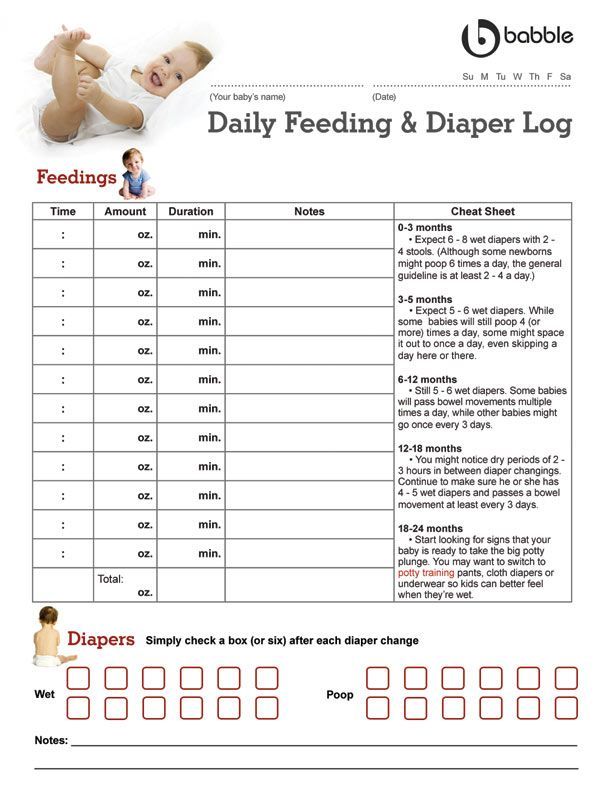 And his arguments are absolutely logical and convincing: fermented milk products are much more similar to the usual breast milk or formula than vegetable purees, which are undoubtedly richer in vitamin composition.
And his arguments are absolutely logical and convincing: fermented milk products are much more similar to the usual breast milk or formula than vegetable purees, which are undoubtedly richer in vitamin composition.
"Sour-milk" start minimizes the appearance of indigestion and is gentler for the baby.
Starting with kefir, after 4-5 days you can add a spoonful of cottage cheese directly to it, introducing the baby to another useful product.
Detailed complementary feeding scheme according to Dr. Komarovsky:
6 months
06:00 - 07:00 - Breast milk / adapted milk formula
10:00 - 11:00 - Baby low-fat kefir* 150 **
14:00 - 15:00 - Breast milk / adapted formula
18:00 - 19:00 - Breast milk / adapted formula
22:00 - 23:00 - Breast milk / adapted formula
* 3-4 tablespoons of kefir. Followed by breast milk/formula. If the body reacts normally, the next day, double the serving size.
**Bringing the volume of kefir to 150 ml, we introduce cottage cheese. First day - 1 teaspoon. The second - two spoons. At this rate, we reach 30 grams for children 6-8 months old, and 50 grams - older than 8 months). Now breastfeeding is completely replaced by 150 ml of kefir + 30 g of cottage cheese.
First day - 1 teaspoon. The second - two spoons. At this rate, we reach 30 grams for children 6-8 months old, and 50 grams - older than 8 months). Now breastfeeding is completely replaced by 150 ml of kefir + 30 g of cottage cheese.
7 months
06:00 - 07:00 - Breast milk / adapted milk formula milk formula
18:00 - 19:00 - Breast milk/adapted milk formula
22:00 - 23:00 - Milk and cereal porridge up to 200ml*
*replaces the last feeding before bedtime with milk and cereal porridge. Three types are the most rational - buckwheat, oatmeal, rice. The scheme for introducing a new product is the same: the first day - 3-4 spoons + breast milk / adapted milk formula, the second day twice as much porridge + breast milk / adapted milk formula, and so on. Ultimately, you should completely replace one feeding with milk and cereal porridge.
8 months
06:00 - 07:00 - Breast milk/adapted milk formula
10:00 - 11:00 - Baby low-fat kefir 150ml + cottage cheese 30mg**
14:00 - 15:00 - Vegetable soup or vegetable puree up to 200 ml*
18:00 - 19:00 — Breast milk/adapted milk formula
22:00 - 23:00 — Milk and cereal porridge up to 200 ml
*Replacing the third feeding. For the introduction of vegetables and fruits, the child must have at least one tooth. If not, which is unlikely, let's wait a little longer.
For the introduction of vegetables and fruits, the child must have at least one tooth. If not, which is unlikely, let's wait a little longer.
To begin with, we conduct trial feeding with vegetable broth - we need to check how the child will react to vegetables. On the first day we offer 30-50 g, on the second - twice as much. If everything is fine, we switch to vegetable soup or vegetable puree and, gradually increasing the dose, completely replace one of the feedings with vegetables.
We feed a vegetable dish for 2-3 weeks, then, by analogy with vegetables, we carry out a test for meat - we cook the soup not on water, but on meat broth (ideally - chicken). If there are no problems, add the pureed meat directly to the soup, after a couple of days, again directly to the soup, - hard-boiled chicken egg yolk - at the beginning 1/5 part, then more. In any case, more than half of the yolk is not needed until the age of one.
**from this period we increase the amount of cottage cheese to 50 g
9-12 months
06:00 - 07:00 - Breast milk / adapted milk formula ***
10:00 - 11:00 - Infant non-fat kefir 150ml + cottage cheese 30mg
14:00 - 15:00 — Vegetable soup or vegetable puree up to 200ml*
18:00 - 19:00 — Breast milk/adapted milk formula***
22:00 - 23:00 — Milk and cereal porridge up to 200 ml**
*Vegetable soups and purees are very diverse - both in terms of the composition of vegetables and the type of meat - as long as it is not very fatty. Mashed potatoes with milk and pureed meat. From 10 months, you can cook soup not on meat, but on fish broth. We give the child both egg yolk and vegetable oil (for food, of course, and not from a spoon).
Mashed potatoes with milk and pureed meat. From 10 months, you can cook soup not on meat, but on fish broth. We give the child both egg yolk and vegetable oil (for food, of course, and not from a spoon).
**Milk and cereal porridges can be varied with pieces of fruit.
***It is advisable to breastfeed a child under one year of age at least once a day.
Whichever scheme you decide on, remember the general rules for introducing complementary foods :
- the child must be healthy when introduced to EVERY new food
- introduce a new product in the morning. So, unpleasant consequences (allergies, indigestion) will not catch you at night
- start with the lowest doses and gradually increase them
- interval between new products - 4-5 days
- complementary foods first, then regular food
- do not force if the child does not want to
- keep a food diary. Keeping a food diary will allow you to track the reaction of the child to a particular product and determine the source of the allergy or disorder in time.


